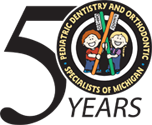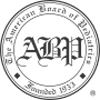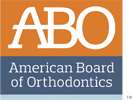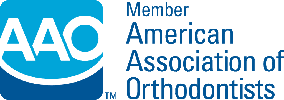-A-
Abscess – infection caused by severe tooth decay, trauma or gum disease.
Amalgam – a silver and mercury material used for fillings.
Anesthetic – a drug used by your doctor to eliminate a patient’s localized pain during certain dental procedures.
Apex – the very tip of the root of a tooth.
Archwire – A wire engaged in orthodontic brackets that is capable of causing or guiding tooth movement.
-B-
Band (orthodontic) – A thin metal ring w/ a brace welded to it used on the posterior teeth where we chew the most that is closely adapted to fit the contours of the tooth and then cemented into place.
Bleaching Agent – a gel used to whiten and brighten teeth.
Bonding – a plastic composite painted on the teeth to correct stains or damage.
Bracket – An orthodontic attachment that is secured to a tooth (either by bonding or banding) for the purpose of engaging an archwire. Brackets can be fabricated from metal, ceramic or plastic.
Bruxism – the clenching or grinding of teeth, most commonly while sleeping.
-C-
Calculus – the hardened plaque that can form on neglected teeth, commonly known as tartar.
Canine – the pointy teeth just behind the laterals also referred to as “eye teeth.”
Caries – another name for cavities or decayed teeth.
Cavity – a tiny hole in the tooth caused by decay.
Ceramic brackets – Crystalline brackets that are aesthetically more attractive than conventional metal attachments.
Crowding – Dental malalignment caused by inadequate space for the teeth.
Crown – an artificial tooth or cover made of porcelain or metal.
Cuspid – the pointy teeth just behind the laterals, also known as canines.
-D-
Debanding – The removal of cemented orthodontic bands.
Decalcification – the loss of calcium from the teeth.
Deciduous Teeth – also called “baby teeth.”
Dental Implants – an implant permanently attached to the jawbone that replaces a missing tooth or teeth.
-E-
Elastics (rubber bands) – Used to move teeth in prescribed direction by creating a tug of war between upper and lower teeth to improve overbite and the fit and function of the teeth.
Enamel – the hard surface of the tooth above the gum line.
Endodontist – a dentist who specializes in root canals and the treatment of diseases and infections of the dental pulp (inner tooth).
Extraction – the removal of a tooth or teeth.
-F-
Filling – a plug made of metal or composite material used to fill a tooth cavity.
Fluoride – a chemical solution used to harden teeth and prevent decay.
Forsus – a piston like spring device used to correct overbites in non-growing patients or those patients reluctant to comply with elastic / rubber band wear.
-G-
Gingiva – The tissue (gums) that surrounds the teeth
Gingivitis – inflammation of gums around the roots of the teeth.
Gums – the firm tissue that surrounds the roots of the teeth.
-H-
Headgear – Generic term for an outside-the-mouth device used to assist in overbite correction with braces.
Herbst appliance – Non-removable appliance designed commonly for overbite problems (see forsusabove)
-I-
Impacted Tooth – often occurring with wisdom teeth, it is a tooth that sits sideways or is stuck below the gum line that often requires extraction.
Incisor – one of the flat, sharp-edged teeth in the front of the mouth.
-L-
Lingual – Of or pertaining to the tongue. A term used to describe the surfaces of the teeth that face toward the tongue.
Lingual appliances – Orthodontic appliances fixed to the lingual surface of the teeth.
-M-
Maxillary – Of or pertaining to the upper jaw. May be used to describe teeth, dental restorations, orthodontic appliances or facial structure.
Mandibular – Of or pertaining to the lower jaw. May be used to describe teeth, dental restorations, orthodontic appliances or facial structure.
-N-
Night Guard – a plastic mouthpiece worn at night to prevent grinding of the teeth. Often used to treat TMJ.
-O-
Orthodontist – A dental specialist who has completed an advanced post-doctoral course of at least two academic years in the special area of orthodontics and dentofacial orthopedics.
Orthognathic surgery – Surgery to alter relationships of teeth and/or supporting bones, usually accomplished in conjunction with orthodontic treatment.
Overbite – The amount of vertical overlapping or coverage of the lower front teeth by the upper front teeth
-P-
Pediatric Dentist – a dental specialist that has completed at least 2 years of post-dental school training in the area of dental treatment and behavior management in children.
Periodontist – a dentist specializing in the treatment of gum disease.
Plaque – a sticky buildup of acids and bacteria that causes tooth decay.
Posterior Teeth – the teeth in the back of the mouth.
Primary Teeth – also known as “baby teeth” or deciduous teeth.
Prosthodontist – a dentist specializing in the restoration and replacement of missing teeth or severely damaged teeth.
-R-
Radiograph – A permanent image, typically on film, produced by ionizing radiation. Sometimes called an X-ray.
Retainer – Any orthodontic appliance, fixed or removable, used to maintain the position of the teeth following orthodontic treatment.
Retention – The passive treatment period following active orthodontic correction during which retainer appliances are used to assist in the stabilization of the teeth.
Root – the portion of the tooth below your gum line.
Root Canal – cleaning out and filling the inside nerve of a tooth that is heavily decayed.
-S-
Sealant – resin coating applied to teeth to prevent decay. Used most commonly for children.
Secondary Teeth – the permanent teeth.
Six-Year Molar – commonly known as “the first molar,” a tooth that typically arrives around 6 years of age.
-T-
Tartar – see calculus.
TMJ / TMD Syndrome – a disorder associated with the joint of the jaw. Often of unknown cause, can frequently be managed by an orthodontist or TMJ specialist.
Tooth Whitening – a process designed to whiten and brighten teeth.
Twelve-Year Molar – commonly known as “the second molar,” a tooth that arrives at 12 years of age.
-V-
Veneer – a plastic, porcelain or composite material used to improve the attractiveness of a stained or damaged tooth.












